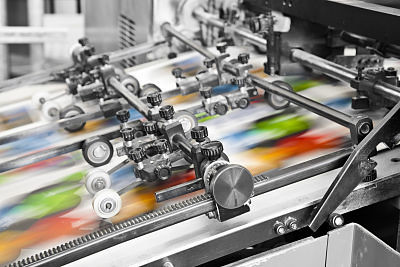Offset printing has long held a prominent position in the world of printing services, and even in today’s digitally driven landscape, it remains the gold standard for high-quality, bulk printing. There are several reasons why businesses, publishers, and marketers still turn to offset printing for their large-scale projects. Chief among them is the superior quality and consistency it offers, its cost-efficiency for large print runs, and its ability to handle a wide variety of materials and formats. First and foremost, offset printing delivers exceptional print quality. The process involves transferring ink from a plate to a rubber blanket, and then to the printing surface. This indirect method ensures that the printed material has sharp, clean images and vibrant, true-to-life colors. Offset presses allow for meticulous control over ink distribution, resulting in highly detailed and crisp text and graphics. For brands that rely on high visual impact, like luxury product labels or art books, this attention to detail is critical. Offset printing can reproduce colors more accurately compared to digital printing, especially when it comes to large areas of solid color, gradients, and images that require intricate color blending.

Another significant advantage of offset printing is its cost-effectiveness when dealing with bulk orders. Although the initial setup costs can be higher than digital printing, primarily because of the need for custom printing plates, this cost is quickly offset as the volume of prints increases. Once the plates are created, the printing process itself is fast and efficient, making it ideal for large-scale production. The per-unit cost drops considerably with higher print volumes, making it the most economical choice for businesses needing thousands or even millions of copies. This makes offset printing particularly popular for projects like catalogs, magazines, brochures, and direct mail campaigns where economies of scale are essential. Offset printing also offers remarkable flexibility in terms of the variety of substrates it can print on. While digital printing is typically limited to certain paper types, offset printing can handle a wide range of materials, including textured paper, heavy cardstock, and even non-paper surfaces like plastic, metal, or fabric. This adaptability makes offset printing invaluable for businesses looking to create unique or unconventional marketing materials.
Additionally, offset presses can print in larger formats than most digital presses, allowing for oversized prints such as posters, banners, and large display materials. Lastly, offset printing is a proven technology that has been refined over many decades. Printers have mastered the craft, ensuring that the final product consistently meets high standards of offset printing services nyc quality. The durability of the equipment and the inks used in the process also contribute to the longevity of printed materials, which is especially important for products like books, packaging, or high-end brochures that need to maintain their integrity over time. In conclusion, despite the rise of digital printing technologies, offset printing continues to be the preferred choice for high-quality, bulk printing projects. Its ability to produce superior-quality images and text, combined with cost-effectiveness for large runs and flexibility with materials, ensures that offset printing remains an indispensable tool in the printing industry.

